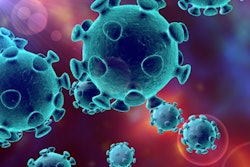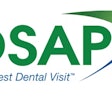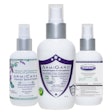
SARS-CoV-2 and how the virus spreads have been on everybody's minds for what feels like an eternity. From personal protective equipment (PPE) failures to mouth rinses that inactivate the virus, DrBicuspid.com brought you the most important infection control and prevention news during this historic year.
Read the top five infection control stories of 2020:
- Ultraviolet light shows where PPE failures occur
Many healthcare workers improperly use PPE, which shields them from viruses such as the one that causes COVID-19, according to an article published in Medical Education. Healthcare workers participated in a training exercise in which they wore full PPE to treat a pretend patient sprayed with a simulated contagion. Once they finished the exercise, ultraviolet light showed that they exposed themselves to infections by failing to put on or take off PPE properly. - Which mouthwashes inactivated SARS-CoV-2 the best?
Over-the-counter mouthwashes may inactivate SARS-CoV-2, reducing the viral load in patients' mouths for a short period of time and potentially cutting the risk of transmission. Three mouthwashes that contained the active ingredients of either dequalinium chloride and benzalkonium chloride, polyvidone-iodine, or ethanol and essential oils significantly reduced the viral infectivity of SARS-CoV-2 to undetectable levels, according to a study. - Podcast: What every dentist and team member needs to know about the new OSHA guidance
Mary Govoni, a leading voice in the industry about infection control, discusses the Occupational Safety and Health Administration's (OSHA) guidance for dentistry workers and employers that was released after practices began reopening following closures necessitated by the COVID-19 pandemic. - Dental teams not at risk of getting COVID-19 at work, study finds
Public health dentists and dental assistants in Italy who treated patients while the COVID-19 pandemic ran rampant did not appear to develop the disease. The occupational risk of dentists and dental assistants for COVID-19 was estimated to be zero when they adhered to basic infection control standards, according to an article in Oral Diseases. - Which preprocedural rinse is best to use during COVID-19?
Dr. Louis DePaola, the associate dean of clinical affairs and a professor in the department of oncology and diagnostic sciences at the University of Maryland School of Dentistry, discusses which preprocedural rinses dentists should have patients use prior to procedures to cut down on viral load.



















